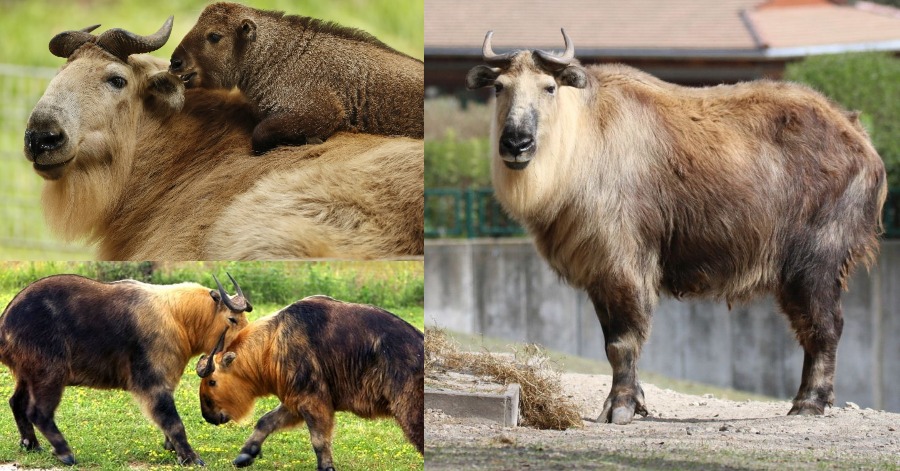The takin which also called cattle chamois or gnu goat is a large species of ungulate of the subfamily Caprinae found in the eastern Himalayas. Whilst the takin has in the past been placed together with the muskox in the tribe Ovibovini, more recent mitochondrial research shows a closer relationship to Ovis. Its physical similarity to the muskox is therefore an example of convergent evolution. The takin is the national animal of Bhutan.
If there’s any hoofed mammal that deserves the limelight, it’s the wildly bizarre takin. Almost any writer and even biologist confronting the takin seem to describe it as a creature composed by assembling parts of other animals. Many accounts describe it as a creation of Dr. Seuss. Taxonomists call it a ‘goat antelope’ and others call it a ‘gnu goat’. Even famed biologist George Schaller describes it as a ‘bee-stung moose’ due to its super-sized schnoz.

Appearance
The takin lacks skin glands but their skin secretes an oily, bitter-tasting substance that acts as a natural raincoat in storms and fog. Streaks of this oily stuff can be seen where Takins rub. The biologist Valerius Geist describes this oil as having a ‘burning taste’. I’m intrigued that takin experts know the taste of this oil. That’s dedication. Male takins also spray various body parts with urine, including their faces, to advertise status. All this oil and urine suggests that the takin would not be a good candidate for petting zoos.
Features
The takin is adapted to its mountainous environment in Asia. While its range includes many countries, most naturalists and hard-core mammal watchers encounter the species in China. Strangely enough, there it shares its range with one of the most beloved and well-known large mammals, the giant panda. In fact, one of the first documented instances of a giant panda eating meat is trail camera footage of one of the fuzzy critters noshing on a takin carcass.
Despite its bulk, the takin moves easily down steep mountain slopes and through thick bamboo forests. That big nose helps it navigate the cold, high-elevation air. The San Diego Zoo reports that the ‘large, moose-like snout has big sinus cavities to warm up the air inhaled before it gets to the lungs. Without this adaptation, takins would lose a large amount of body heat just by breathing’.
Eating
Takins eat a large variety of plants including such seemingly unpalatable forage as rhododendron and evergreen trees. Takins travel trails to salt licks, which undoubtedly provide minerals but may also help neutralize plant toxins.
Sources: Cool Green Science.









Leave a Comment